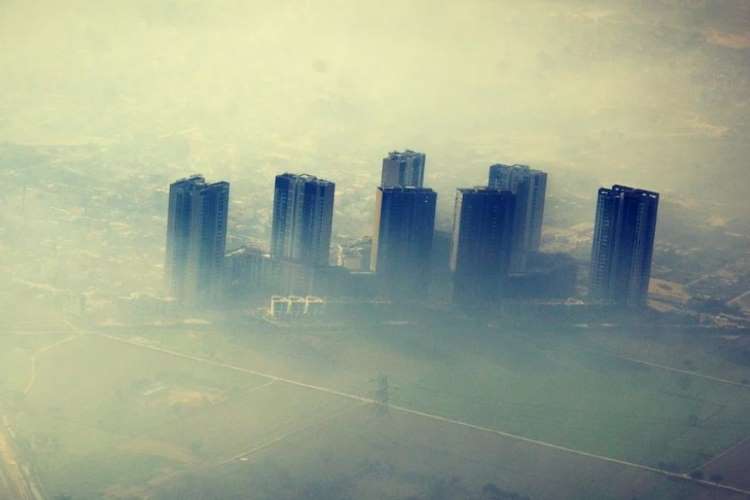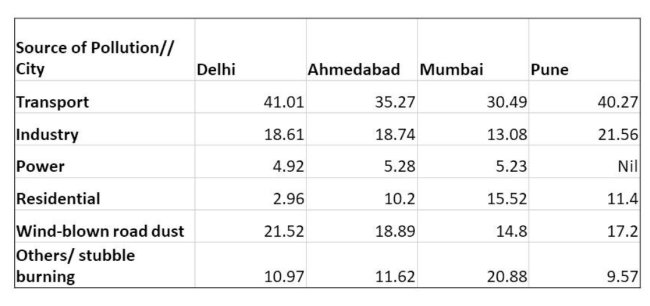
By K Yatish Rajawat
The nip in the Delhi air has turned into chilly winds and the smog is starting to smother Delhi with its deadly pollutants. City politicians have started thinking about pollution once again. The obvious target is, as always, the farmers in Punjab and Haryana. Why them, you may ask. The answer is they are the most convenient “other” — they do not belong to the Delhi politician’s constituency.
The smoke from stubble burning blows over Delhi and creates a deadly smog with toxic pollutants already present in the air. The smog does not allow dispersion of pollutants and chokes the city population. (See the table for the detailed list of pollutants and their sources.) The pollutants created in Delhi convert themselves into complex pollutants and enter the water, soil and air. Through air and water, they move into neighbouring states. This means pollutants from Delhi also travel, but we hardly hear the neighbouring states complain about it.
READ I Atmanirbhar Bharat a non-starter without an MSME surge

Delhiites who use SUVs to travel to the local market will tell you in great earnestness that it is farmers who are causing the pollution. By burning the rice stubble in the fields, they choke the children in Delhi. Their arguments crumble under the weight of data — transportation contributes 41%, industry 18%, wind-blown dust 21%. Yes, it is true that stubble burning worsens the situation by preventing dispersion of pollutants. But Delhi politicians want the people to focus on the 15% of the problem, not the 85% as there are many entrenched interests responsible for it. So, the farmer becomes the convenient “other” — an easy target — for them.
Industry experts see vehicle ownership growing at a blistering pace — from 22 cars per 1000 people in 2018 to 175 cars per 1000 people by 2040. A study by Centre of Science & Environment finds that stubble burning reached its peak in 2016, and it has been on a decline ever since. Punjab still has 5-8 times more active stubble burning hotspots compared with Haryana. This means that farmers in Haryana have changed their behaviour and reduced stubble burring faster than their counterparts in Punjab.
READ I Boon or bane? Universal basic income is not a poverty eradication tool
Let’s analyse the claim of the Delhi elites that stubble burning is the lead cause of pollution. Scientific studies say stubble burning can create a smog only if a large number of farmers burn the stubble simultaneously. If the activity happens over several weeks, it may not create a smog cover in Delhi. The big question now is what causes the smog. Do the rural areas in North India experience the same toxic smog cover? There is no pollution data for rural areas where stubble burning is happening. The agencies that collate pollution data do not record the numbers for rural areas, as if rural lives do not matter.
If rural pollution numbers were available, the farmers can be told that stubble burning is affecting the health of their family members and they may make some effort to reduce stubble burning. Instead, the state prefers to use coercion, threats and fines to prevent stubble burning. The underlying assumption is that the farmer is stupid, does not care for self-preservation and the only way to make change his behaviour is to threaten him. There is a need for change in the attitude of policy makers and the government.
READ I Future perfect: Life after the fourth industrial revolution
It is easy to blame and threaten a farmer. But pollution is not just about smog when PMI 2.5 is the major cause. Pollution is always there in Delhi air — it is called baseline pollution. Because of the COVID-19 lockdown, factories, construction activity, and vehicular traffic have fallen. This was a great time to do a study of baseline pollution in Delhi, and a scientist did it.
Gufran Beig, a scientist with the Indian Institute of Tropical Meteorology, analysed the data from February 20 to April 14 and came up with the base level of seven pollutants including PM10, PM2.5, NO2 and SO2. The research was published on October 10, 2020. Pollution remained below the 40μg/m3 mark on most days of the lockdown period and even touched 20μg/m3. On October 10, the lockdown was eased at 5 pm and the figure was 95μg/m3 — nearly five times the baseline. The baseline values for PM10 and PM2.5 were found to be 38μg/m3 (± 8) and 22μg/m3 (± 6). The value for NO2 was 8ppb (± 3), which is considered very high, says the paper.
The research shows that stubble burning is not the only issue — the baseline pollution figure can rise five times without stubble burning. The politicians and policy makers cannot afford to threaten Delhiites with penalties, fines, or imprisonment — they want the governments of Haryana and Punjab to do it with their people.
